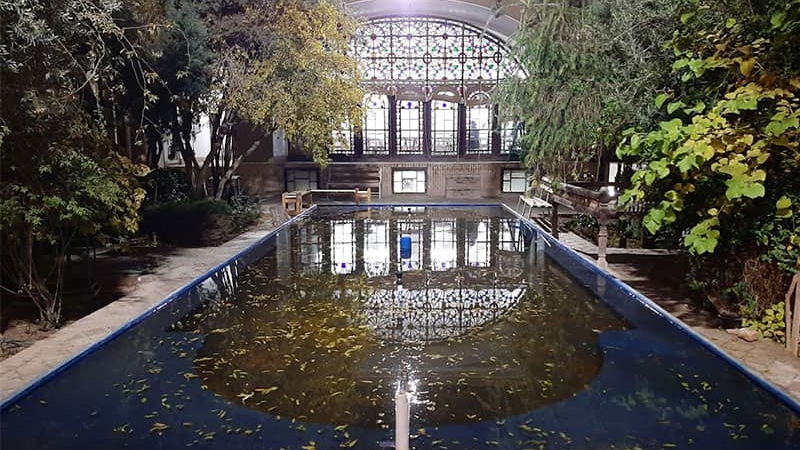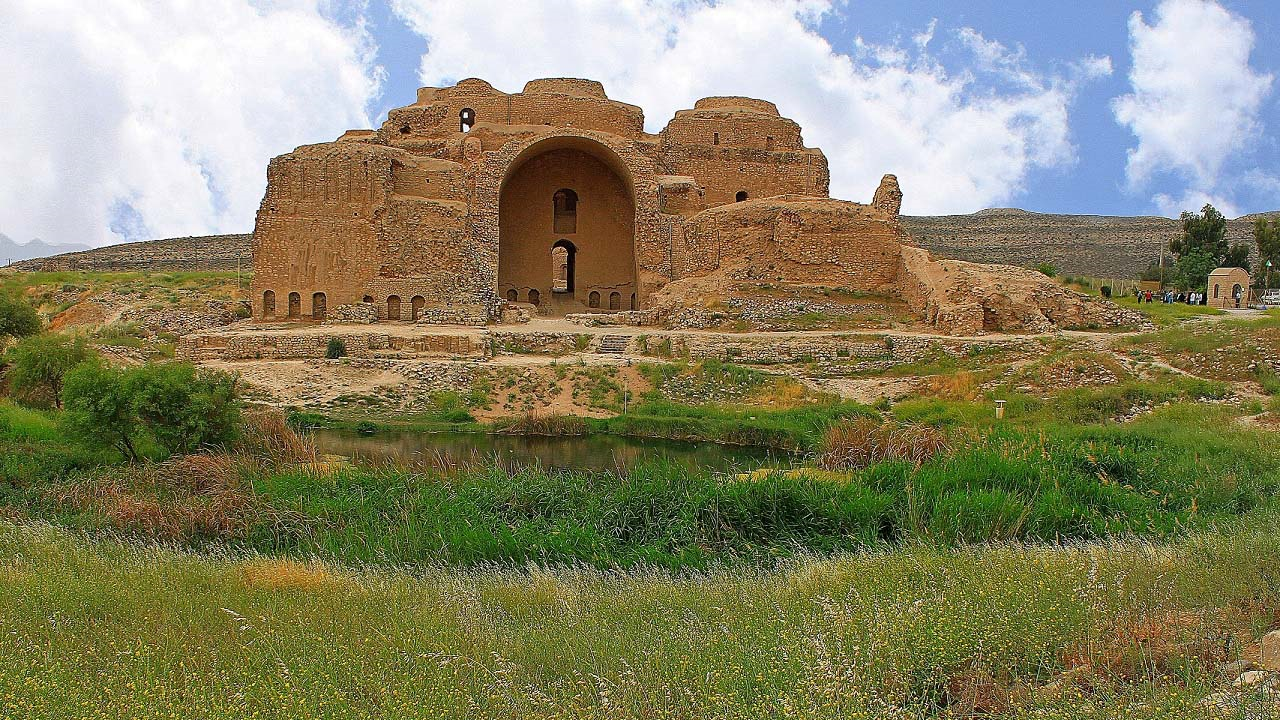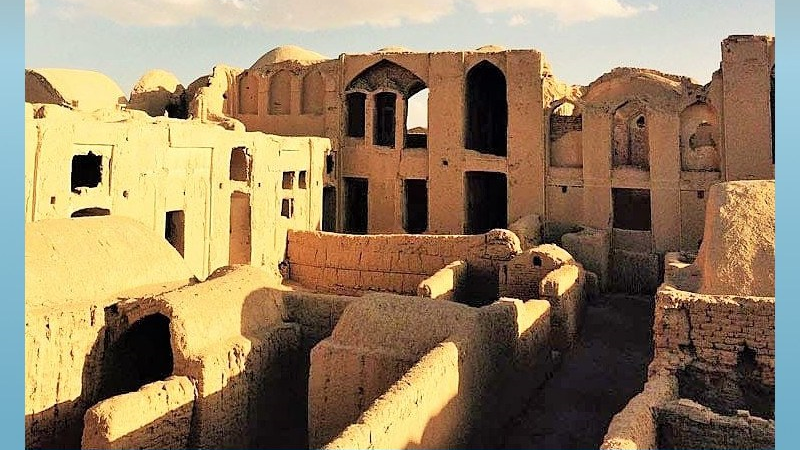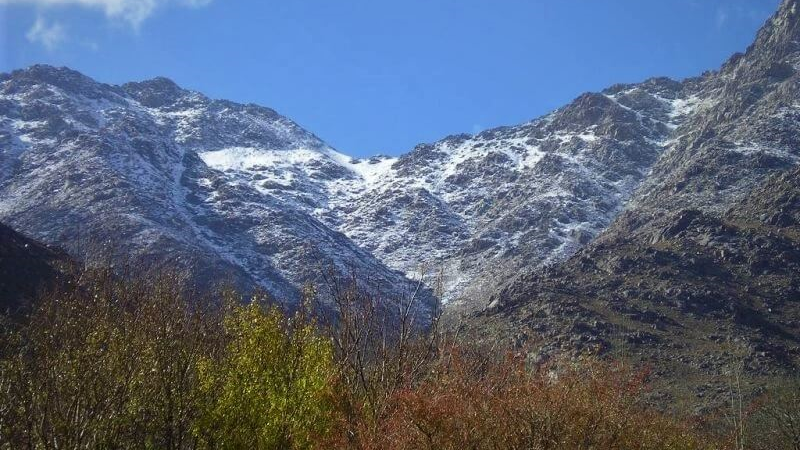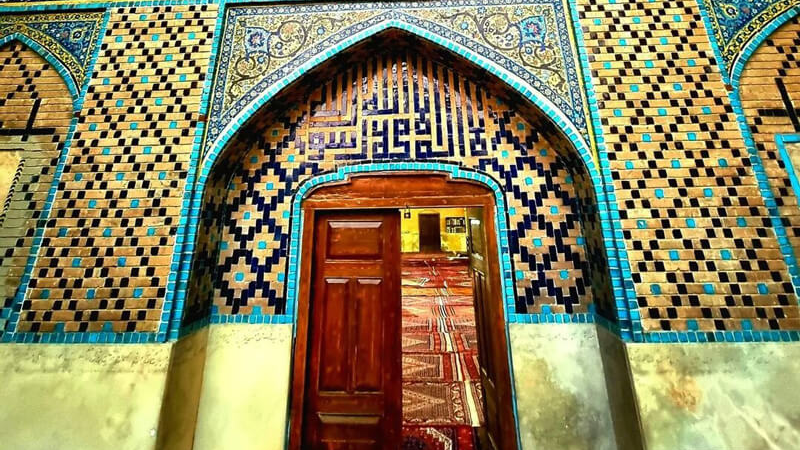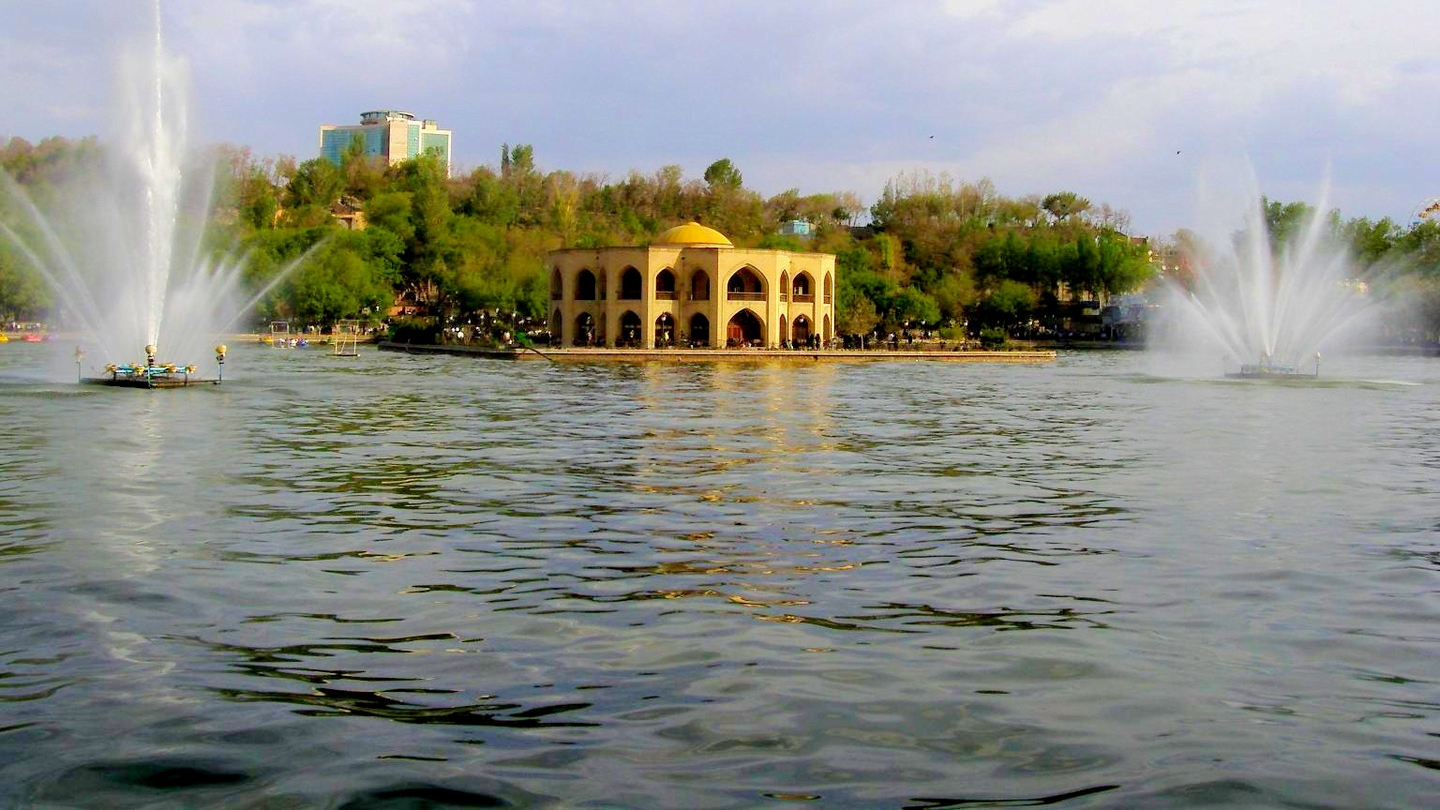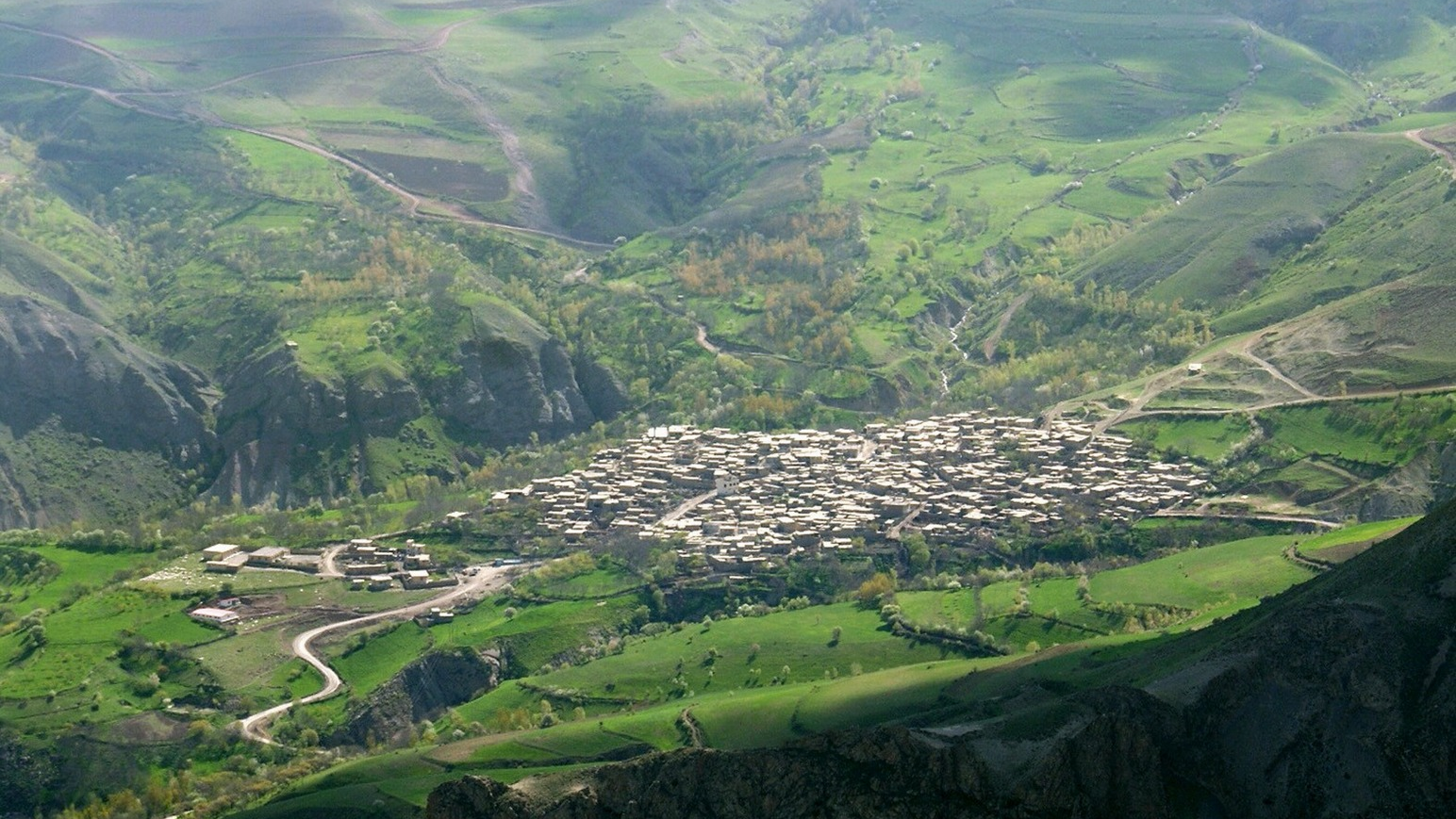
Naqsh-e Rajab; Depicting the Coronation of Ancient Iranian Kings
60 km north of Shiraz and 13 km north of Marvdasht City, there is an archaeological site called “Naqsh-e Rajab” housing some of the most beautiful reliefs of the Sassanid era. Due to the special skill used in creating these rock face inscriptions and reliefs the petroglyph of Naqh-e Rajab is considered one of the symbols of Sasanian art. This petroglyph is located three kilometers from Persepolis and was created on the foothills of a mountain.
The choice of the name “Naqsh-e Rajab” for this historical site seems a bit strange, but some local people believe that the reason for choosing this name by their predecessors is that there was a coffee house near these reliefs, which was known as “Rajab”.
What Do Naqshe Rajab Petroglyphs Narrate?
The petroglyphs of Naqshe Rajab narrate the story of the three coronation ceremonies of Sassanid emperors. Even though these petroglyphs are not big in terms of dimensions, but the extremely elegant manner in which they were designed and inscribed makes them outstanding and unique. The way these petroglyphs are depicted, narrate the ritual and religious aspects of the ceremony.
These reliefs are located on a route that was known as the “Royal Road”, which was probably constructed to flaunt the power of the Sassanid kings to the passing caravans. 25 centuries ago, this Shahi or Royal Road was of great importance in ancient Iran because it was the connecting route between Persepolis and the Anatolian peninsula in the northwest of the Iranian plateau, and a lot of commutation took place in it. Of course, Naqsh-e Rajab is located near an ancient city called Istakhr, which was the place of birth and coronation of Sassanid kings. Therefore, in addition to that, there are many petroglyphs and motifs in this area that depict the important events in the lives and reigns of those kings.
The First Assembly
The first petroglyph of the Naqsh-e Rajab depicts Shapur I, who succeeded Ardeshir Babakan, riding on a horse. In the figures of this petroglyph, exaggeration has been made in the design of the arms and body to show their strength. This form of design can be seen in other prominent Sassanid reliefs.
In this relief, the king is riding a horse in front of the others, and the king’s crown is presented to him by Ahura Mazda as a symbol of divine power.
Since a part of this petroglyph has been damaged over time, some archaeologists have doubted that it is about Shapur I’s coronation and believe that it narrates the coronation ceremony of Hormuz I.
The Second Assembly
Another prominent relief of Naqsh-e Rajab is related to the scene of the coronation ceremony of Ardeshir Babkan. This relief is over 4.5 meters long and depicts the images of eight men, women, and children. Ardeshir Babakan, the founder of the Sassanid dynasty, and Ahura Mazda (The god of ancient Iranians, standing in the center of the image, are the main figures of this narrative.
In this relief, Ardashir can be seen having stretched out his hand to take the crown, and the person standing behind him is believed to be Hormuz, paying homage to Ahura Mazda. Other people who are present in this relief are members of the royal family who participated in the coronation ceremony of Ardeshir. By evaluating the religious atmosphere of the work and comparing different figures, archaeologists have suggested that it is one of the oldest Sasanian petroglyphs.
The Third Assembly
The third petroglyph of Naqsh-e Rajab, containing a different narrative, depicts the coronation ceremony of Shapur I, the son of Ardeshir. In this petroglyph, Shapur and the Great Mobad are both riding on horses, and Shapur is receiving the royal crown from Mobad’s hand. The religious spirit of the ceremony is clearly visible in this work as well as the other two works.
This valuable ancient archeological site was inscribed on the list of Iran’s national heritage in the year 1931.
Due to the special skill used in creating these rock face inscriptions and reliefs the petroglyph of Naqh-e Rajab is considered one of the symbols of Sasanian art.
| Name | Naqsh-e Rajab; Depicting the Coronation of Ancient Iranian Kings |
| Country | Iran |
| State | Fars |
| City | Marvdasht |
| Type | Historical |
| Registration | National |

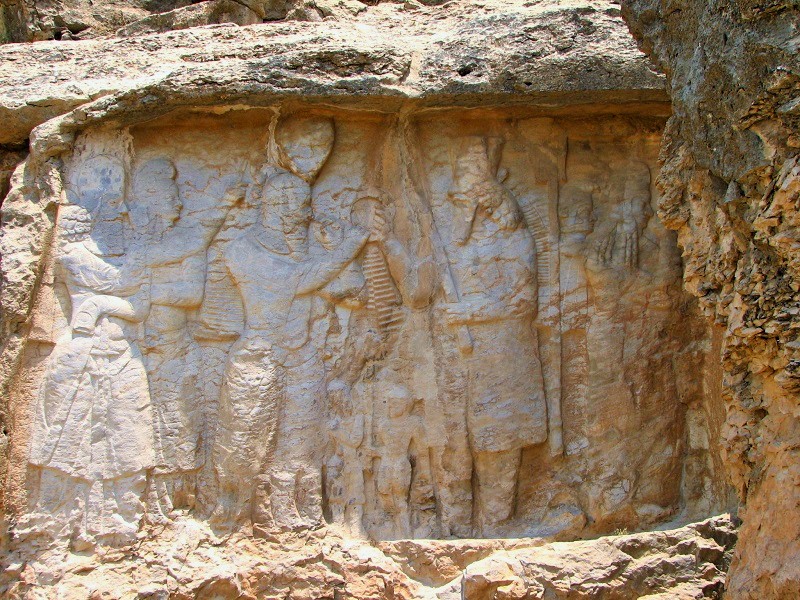
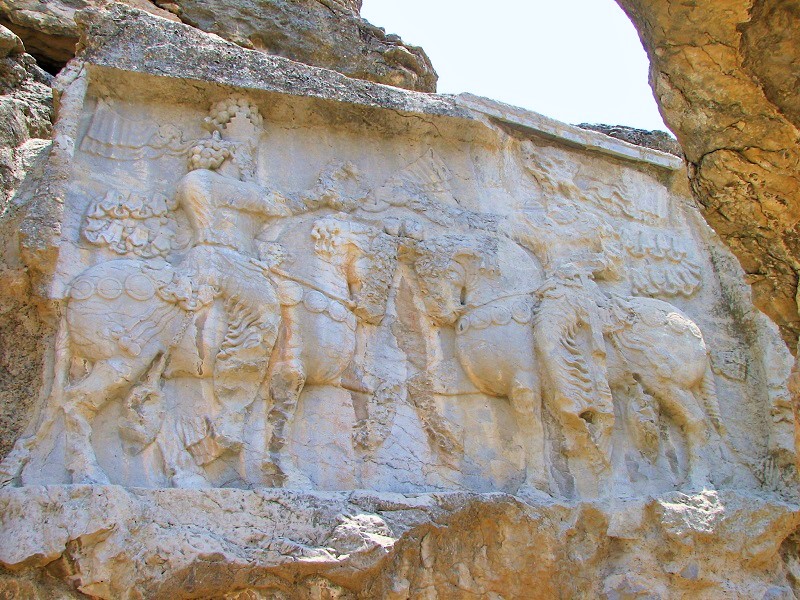
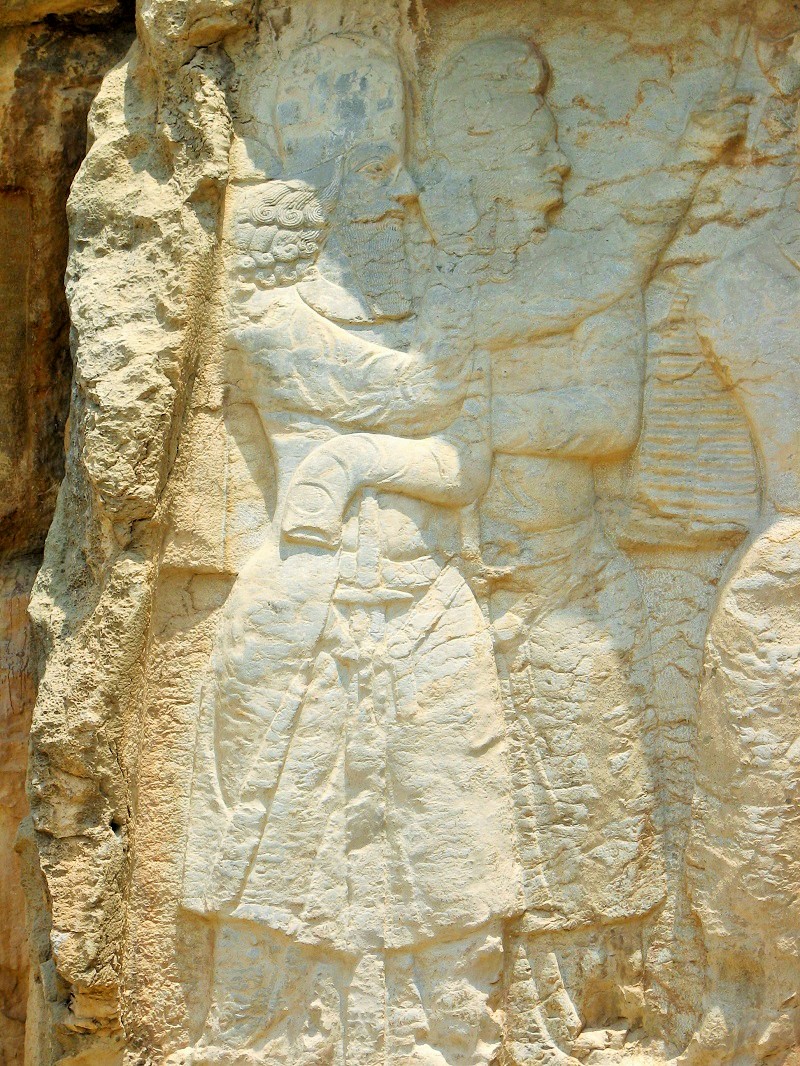




Choose blindless
Red blindless Green blindless Blue blindless Red hard to see Green hard to see Blue hard to see Monochrome Special MonochromeFont size change:
Change word spacing:
Change line height:
Change mouse type:


